The Birth of a New Unit
|
The
division was raised on 3 October 1943 in the response to the demand from
Adolf Hitler's headquarters for a new formation that was to bear the
name of the German knight Götz von Berlichingen. This new unit was to
be an entirely new formation and recruiting difficulties were to delay
its forming until December of 1943.
|
Who was Götz von Berlichingen?
|
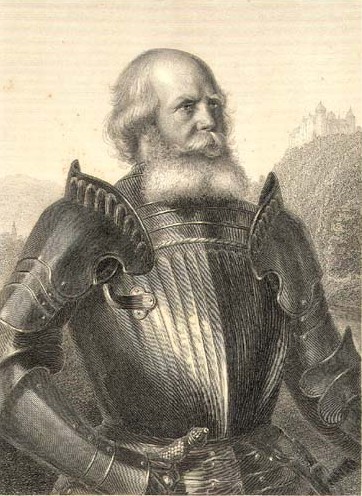
Götz
(or Gottfried) von Berlichingen was a German knight who lived between
1480 and 1562. Born at the castle of Jagsthausen, he waged many wars and
carried on numerous feuds - mainly for ransom and booty. While assisting
Albert IV, Duke of Bavaria, in the siege of Landshut in 1505, his right
hand was shot away. The iron hand he then adopted allowed him to continue
fighting, gave him the nickname of "Götz of the Iron Hand"
and the SS division that was to bear his name almost four centuries
after his death, a symbol. (No evidence has so far been found to support
the colorful theory that the men of the 17th SS Division adopted the
memorable words of Götz von Berlichingen in Goethe's play of that name:
he told the Bishop of Bamberg "kiss my ass!").
|
Obtaining Elements
|
The
divisional elements were to be built up in western France during
November 1943, and a formation staff (Aufstellungsstab) was set up under
SS-Obersturmbannführer Otto Binge, provisionally based at Poitiers,
under the LXXXth Army Corps, 1st Army, Army Group "D". This
was to remain the new Division's higher formation until late April 1944,
when it came under the 1st SS Armored Corps.
On
24 November, one of the Division's most noteworthy units were raised.
This was the armored reconnaissance battalion (SS-Panzer-Aufklärungs-Abteilung
17), which was based upon the 15th (motor-cycle) companies of the "Frundsberg"
Division's two infantry regiments and formed at Thouars. Two days later
on 26 November 1943, the 40 year-old Werner Ostendorff was chosen to
command "G.v.B." Before being given command of "G.v.B.",
he had been on the staff of the SS Armoured Corps and was its chief of
staff at Kharkov and during the Kursk and Mius offensives. Ostendorff
was appointed on 26 November 1943, but did not assume effective command
of "G.v.B." until January 1944 as a result of delays in
raising the Division.
Supply
for the divisional elements was slow and with only three quarters of the
required transport at hand, the Division began a collection of French
vehicles on the orders of the LXXXth Army Corps. In this way, "G.v.B."
was at least partially motorized by March 1944... just three months from
D-Day.
|
World
War II Combat Timeline
October
1943:
Division raised in Southern France
3 October, 1943: Reichsführer-SS Heinrich Himmler gives unit the honor
title "Götz von Berlichingen". Unit raised from training, replacement
units and some Balkan volksdeutsche.
November 1943:
Werner Ostendorff promoted to SS-Brigadeführer &
division CO
26 Nov: Division forming Tours, France, possibly as SS-Kampfgruppen 1-3
December 1943: Division continues formation; strength at 4,000.
January 1944: SS-Brigadeführer Ostendorff joins the Division's HQ at
Thouars, France.
February - March 1944: Division training, France
April 1944:
April 10: Division's formal activation ceremony,
Thouars, France. Attendees include Reichsführer-SS Himmler and "Sepp"
Dietrich. Himmler awards cufftitle to division members.
May 1944: France. Division strength at 14,000+
June 1944:
June 1: GvB stationed at Thouars, France with no tanks; only
assault guns; division only has 22-25 weeks of training, suffers from a lack of
vehicles and is 40% below strength for officers & NCO's. Unit strength
17,321
June 6: Allied invasion, Normandy
June 10: GvB Division posted to Normandy to counter allied landing, some
troops have to bicycle to the front.
June 11: first combat Carentan; between Saint Lô and Coutances; SS-Kampfgruppe
1 sent to Denmark to relieve 363rd Infantry Division; SS-Kampfgruppe 3 sent to
Jutland
June 12: US paratroopers capture Carentan
June 13: combat at Coutances; unsuccessful counterattack by SS-Pz.g Regt 37
(against the US 101st Airborne)
June 16: SS-Brigadeführer Ostendorff WIA ; SS-Oberführer Eduard
Diesenhoffer becomes division CO.
June 18: SS-Kampfgruppen 1 & 3 become SS-Panzergrenadier Regt.s 49
& 51 respectively
June 30: combat at Carentan; SS-Kampfgruppe 3 strength: circa 2,900
July 1944:
Division strength at 8,500; combat
at Carentan
July 25: US Army breaks through at St. Lô.
August 1944:
Aug 4: 51st Regt. sent to Troyer, France
Aug 6: GvB participates in "Mortain Offensive" (a.k.a.
Operation "Luttich") - the assault on Avranches; briefly assigned to
the 2nd SS-Panzer Division
August 7: Operation Luttich
Aug. 10: 49th Regiment reclassified as "26.SS-Panzer-Division"
(originally named 25th SS Panzer Division by the SS-FHA before they realized
that they had already given out the number to a SS division of Hungarian
recruits) & 51st Regiment as "27.SS-Panzer-Division" to confuse allied intelligence.
Aug 13: 49th Regt. transferred to France; attacked by the Danish
resistence and Allied "Jabos" (fighter-bomber aircraft) the unit
suffers heavy casualties and loses much of its equipment.
Aug 15: "Mortain Offensive" fails and becomes Falaise pocket.
GvB split into 4 Kampsgruppe:
Kampgruppe Braune
Kampgruppe Gunter
Kampgruppe Fick
Kampgruppe Wahl
Aug 16: severely depleted Regt. 49 arrives Calais.
Aug 28: 1st Battery 17th SS Flak Battallion covers retreating German
troops at Loire river bridge
Aug 22: Regt. 49 transferred to Meaux
Aug 23: Regt. 51 attacked by US 4th Armored Division, Troyes
Aug 25: Regt. 51 remnants flee Troyes; unit subordinated to GvB (some
accounts say this occurred Sept 7-8); 49th Regt. combat Romilly; then retreats to
Verdun
Aug 29: remnants of GvB withdraw to Chartres forest for refitting.
Aug 31: Regt 49 abandons Verdun
September 1944:
Sept. 1: GvB refitting Metz.
Sept 5: stationed at Arnaville
Sept. 7: 49th SS Panzergrenadier and 51st SS Panzer brigades incorporated in to GvB (some accounts say Sept 8; SS-Panzergrenadier
Regiment 37 defends Dornot against US troops.
Sept. 8: US 5th Infantry Division creates bridgehead over Moselle River
at Dornot; GvB strongly counterattacks; 26th & 27th SS Divisions
disbanded
Sept. 9: US 5th & 80th Infantry Divisions create new bridgehead over
Moselle River at Arnaville; GvB stongly counterattacks
Sept. 13: GvB counterattacks fail; US 5th & 80th Infantry Divisions
maintain & expand the Arnaville bridgehead;
Sept. 14: GvB in action Saar area, defending Metz.
Sept 15: division strength 16,832
Sept 17: Americans liberate Foret De Facq
October 1944:
Combat in
Saar area;
Oct 31. Division badly depleted
November 1944:
GvB assigned to SS-Gruppenführer Max Simon's XIII. SS-Korps.
Nov 8: USAAF bombs GvB division HQ
Nov 16: Hitler authorizes the withdrawal of GvB from Metz
Nov 19: stationed at Maginot Line, Faulquemont
Nov 22: US troops liberate Metz.
December 1944:
Dec 4: GvB strength at 4,000 men and 20 AFV's
Dec 24: GvB sent to rear for refitting. Panzergrenadier Regiments brought
to full strength with the addition of many Volksdeutsche replacements.
Dec 26: GvB receives 57 new sturmgeschultz
Dec 31: As part of XIII SS-Armeekorps, GvB participates in Operation
Nordwind the last German offensive in the west. Attack against US Seventh Army
(XV Corps) 44th and 100th Infantry Divisions in the eastern Saar.
January 1945:
Jan
1-6: Heavy combat, Operation Nordwind, near Gros Réderching
and Rimling.
Jan 3: Much of division staff relieved.
Jan 5: Army Group G abandons breakthrough attempt with GVB, shifts focus
towards Alsatian Plain. Heavy fighting nevertheless continues against US 44th
and 100th Infantry Divisions and reinforcements from US 63rd Infantry Division
and French 2nd Armored Division.
Jan 10: Division CO, Standartenführer Hans Linger, captured.
Jan 13: GvB withdraws towards West Wall
March 1945:
Mar 18: GvB retreats from Rimlingen; German West Wall broken
Mar 22: Division abandons all vehicles; divisional CO Oberführer Fritz
Klingenberg KIA.
Mar 25: GvB retreats across the Rhine into Germany.
April 1945:
April 1: Division strength at 7,313.
April 18: GvB assigned to defense of Nürnberg
April 20: Nürenberg falls
[ in an interesting note, Antonio Munoz in his book Iron Fist (see bibliography)
alleges that US troops of the 42 Infantry Division massacred 200 SS grenadiers
from the 1st Batallion, 38th Regiment, GvB., dumping the corpses in a mass
grave. Some human remains were positively identified in 1976.]
April 24: division retreats to Donauwoerth on the Danube river.
May 1945:
May 7:
Surrenders to US forces near Achensee
World
War II Unit Composition
Stab der Division
Artillerie Regiment 17
SS-Flak-Abteilung 17
SS-Pionier Bataillon 17
SS-Nachrichten-Abteilung 17
SS-Feldersatz Bataillon 17
SS-Instandsetzungs-Abteilung 17
SS-Sturmgeschütz-Abteilung 17
SS-Divisions-Nachschubtruppen 17
SS-Wirtschafts- Bataillon 17
SS-Divisions-Nachschub-Abteilung 17
SS-Feldpostamt 17
SS-Panzerjager Abteilung 17
SS-Panzergrenadier Regiment 37
SS-Panzergrenadier Regiment 38
SS-Panzergrenadier Regiment 49 (a.k.a. SS-Kampfgruppe 1)
SS-Panzergrenadier Regiment 51(a.k.a. SS-Kampfgruppe 3)
SS-Panzer-Aufklärungs-Abteilung
17
[51st SS Panzer Abteilung ("Mersig"?)]
SS-Kriegsberichter-Zug
17
SS-Feldgendarmerie-Kompanie 17
SS-Feldersatz-Bataillon 17
SS-Sanitäts-Abteilung 17
Divisional
Commanders
|
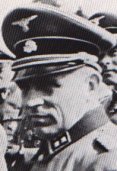
|
SS-Standartenführer
Otto Binge
October
1943 - January 1944
June 16, 1944 - June 18, 1944
August 1, 1944 - August 29, 1944
|
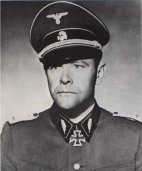 |
SS-Oberführer
Werner Ostendorff -- Died May 1, 1945
January
1944 - June 15, 1944
October 21, 1944 -
November 15, 1944
(later
promoted to SS Brigadeführer und Generalmajor der Waffen-SS -- See
Photo)
|
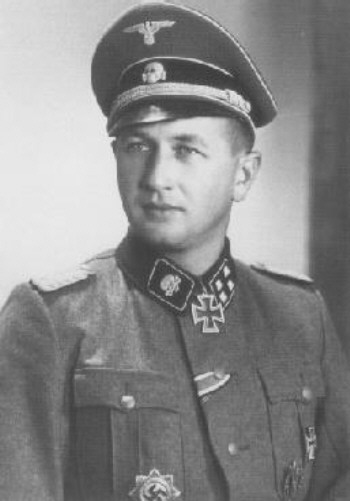 |
SS-Standartenführer
Otto Baum
June
18, 1944 - July 30, 1944
|
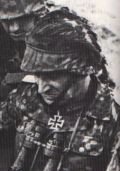 |
SS-Standartenführer
Dr. Eduard Deisenhofer (missing)
August
30, 1944 - September 1944
|
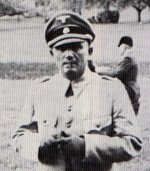 |
SS-Standartenführer
Thomas Müller (substitute)
September
1944
|
| No
Photo Available |
SS-Standartenführer
Gustav Mertsch (substitute)
September
1944
|
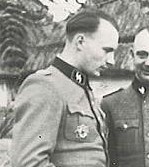 |
SS-Standartenführer
Hans Lingner (taken prisoner)
November
15, 1944 - January 9, 1945
|
| No
Photo Available |
Oberst
Gerhard Lindner
January
9, 1945 - January 21, 1945
|
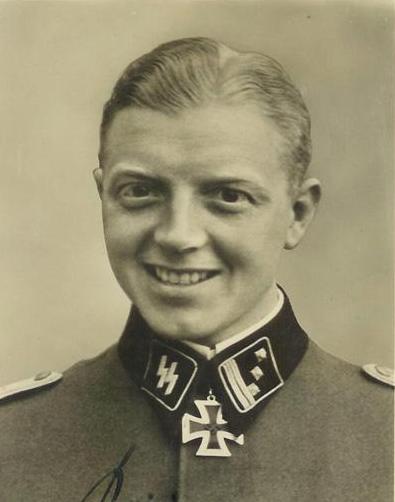 |
SS-Oberführer
Fritz Klingenberg (died March 22, 1945)
January
21, 1945 - March 22, 1945
|
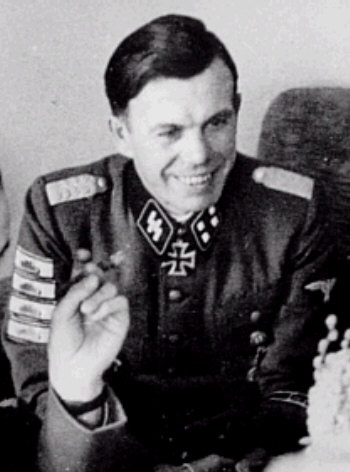 |
SS-Obersturmbannführer
Vincenz Kaiser (in temporary command)
circa
March 24, 1945
|
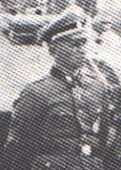 |
SS-Standartenführer
Jakob Fick
March
24, 1945 - March 26, 1945
|
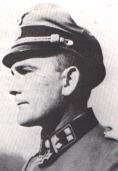 |
SS-Oberführer
Georg Bochmann
March
27, 1945 - May 9, 1945
(Photo
shows Bochmann before promotion as SS-Obersturmbannführer)
|
|
Historical
information is used with the permission of Roger James Bender
Some
photos
are from the collection of Jost Schneider Archives
|








